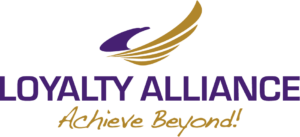Update to this post: Since the publication of this article, there have been a couple items that I would like to share with the readers.
1. This post talks about the difference between Process Analysis and Process Improvement. Much of the focus was on Process Analysis and the benefits of that activity. That is the “what”. As far as the “how” to do that, you might have your own tools that you use. If you don’t have or leverage tools on the “how” to analyze processes in structured and guided sessions, I invite you to click on this link and learn about the three Conversation Frameworks I call MAPPING, SNAPSHOT, and IDENTIFY. Process Conversation Frameworks Trio Overview Video Feel free to contact me through the website if you are interested in learning more about these tools.
2. Over the last few months, I have been surveying organizations and consultants on which organizational challenges they are facing or seeing with their clients. The data, while still a small sample at this point, is beginning to show some interesting trends and results. For example, on this topic of Processes, in the current respondent data results, 93% of the respondents say that they have challenges around Process Development. 93%. And the most common scenario that challenges them in this specific topic is the following:
The company has processes that were never formalized because they were considered “insignificant” but have now grown in importance and need to be documented or formalized.
3. Besides Process Development, Wasteful Processes is a topic in the on-going survey, and in the topic, 87% of the respondents say that they are faced with challenges about wasteful processes and tagged this scenario most frequently: Processes were established pre-current technology and tools being used and no process analysis has been done to identify where waste can be eliminated.
4. The last process-related topic, Process Analysis, meaning improvements for existing processes, is not ranking as high as the other two process topics, but it still merits mentioning. Respondents have identified Process Analysis challenges in 73% of the survey results. In this category, the most common situation is the following: A new department head inherited “old” processes. He/she sees the need to review those processes with the staff to see where they want to or see the need for changes to be made.
5. If you would like to participate in this Organizational Challenges ongoing survey, I would welcome your feedback. The survey takes 15 minutes to complete. After receiving a larger data sample, I plan to produce a report and share it with the people who took the survey. The survey can be taken by multiple people inside an organization. Having various perspectives from the same organization would be quite powerful and insightful. The same link can be used by multiple people. Here are the links to use:
a. For organizations/employees (or consultants who would like to analyze their internal challenges: Organizational Challenges Survey
b. For Consultants/Coaches who would be considering the challenges that their clients are facing, please use this link (again, multiple people from within the consulting company who have insights into client challenges came use this link): Client Challenges Survey
6. For those readers who would like to dive into the world of neuroscience at a basic level and understand how your way of processing information impacts your communication with employees and clients, I have developed a short, 5-minute, 10-question assessment that I call QUADRANTS. Here is a link to a short video on this assessment: QUADRANTS Thinking Styles Assessment Overview video If you are interested in taking this short assessment and receiving a free, basic report, please use these links:
a. English: QUADRANTS Thinking Styles Assessment – English
b. Spanish: QUADRANTS Thinking Styles Assessment – Spanish
c. Upon completion of the assessment, you will receive the free, basic results report with an option to purchase a longer, personalized report with results interpretations.
d. If you are working with teams or would like to have department staff members take the assessment, the same links apply and a team/group results interpretation report and coaching call with the supervisor, manager, or team leader is now available.
PROCESS ANALYSIS IS NOT PROCESS IMPROVEMENT.
This is the second article in a mini-series of three pieces.
Business owners understand the need to introduce general improvement initiatives into their organization. The payoff that some companies are experiencing is astounding. Unfortunately, not every company has enjoyed that same success. Subsequently, they give up somewhere in the middle of the journey with lots of money invested and little to show for the investment. At the same time, the employees have chalked up the improvement initiative as another “program of the month.”
If this resembles your situation, there is a way to bring improvement initiatives back into your organization. You must focus on the three Ps – the People, the Processes, and your Planning/Preparation routines. Last month we talked about People, and this month we will focus on Processes, specifically Process Analysis for an existing process.
A periodic review of your company’s significant processes (called Process Analysis) using a Conversation Framework includes:
· The people involved in each process,
· An understanding of how the process has changed since the last time it was analyzed,
· A collaborative effort to see how the process should be modified because of recent changes in your organization,
· Where your bottlenecks, pain points, and areas of waste exist in current processes,
· If there is a need to do a more radical update/revamp/re-engineer of the process, and
· What improvements could/should be made to improve productivity.
· During the guided conversation, you give your staff a critical message: “I care about what you do, how effective you are in your job, and how you think things could be improved.” Additionally, after the process analysis session, the company has more substantial reasons and justification for implementing process changes (the actual process improvement activity).
I have facilitated several process analysis sessions over the years. Some situations I encountered follow. Perhaps you have similar situations in your company.
Need for a Fresh Eye
Jody and Brenda were a husband/wife management team and had owned their framing shop for over ten years. Their order fulfillment process had changed over the years, but always as a reaction to specific jobs and situations. Jody’s sales were consistent, but his costs were rising, meaning less profit for the business. He saw the need to streamline his order fulfillment process and remove bottlenecks so he could be more productive. However, he wanted a fresh eye to look at the process since he was so close to it.
After mapping out the process and analyzing where it was working well, Jody realized that it was rather clumsy in other areas. He also saw where the bottlenecks existed (primarily because of a lack of discipline and workshop organization). Jody could see precisely where his problems were.
After the session, Jody revised his workshop’s layout to improve workflow, and he changed some inefficient procedures. Ten years to create the situation, but only a few hours were needed to step back, give it a fresh set of eyes, visualize the current state, and define ways to improve the situation.
Defining a Process
Tim was a writer/editor who had recently started his own marketing consulting company.
Tim felt he wasted time with potential prospects as they worked through the quoting process. Those who didn’t ultimately take his services often ate up a substantial amount of his time before deciding. Tim wanted to see how his process could be changed to minimize his time commitment during the quote phase while still answering the prospect’s questions – moving them toward a decision.
After a short process analysis session, Tim realized where his trouble spots were, and he came away with specific ways to correct the situations. The reality was that his process didn’t have enough checkpoints and confirmation points. He didn’t have enough feedback from the prospect early in the process to know if the services/quotes offered were getting favorable reviews or not. Until Tim stepped back and visualized the whole process, he had not realized how little feedback he had received.
Unofficial, On-the-Fly Process
Nick worked for a plastics company. They ran many jobs daily and diligently tried to meet the customers’ demands. Their schedule was created one day before and then distributed to people in the plant. Everything was fine until there was a schedule change – which would happen frequently, even several times a day. The customer would call and need parts sooner; materials weren’t in-house when the job was scheduled to run, or materials came in for a job that should have been run the previous day. Those changes called for constant set-up and scheduling adjustments and redistribution of staff.
Nick wanted help to formalize their scheduling process, specifically in the schedule changes area. Schedule changes were part of their culture and showed customers their ability to be flexible and “go the extra mile,” but the aftermath of schedule changes was frustrating and inefficient.
After a process analysis session, they developed an official process for making the needed last-minute scheduling and production changes and communicating those changes to the workforce. The process became an official process for the company and could then be measured for effectiveness.
Process analysis sessions are an excellent way for organizations to open communication lines in an organization. People want stable processes that allow them to work efficiently and effectively. Employees prefer a stable workplace grounded in sensible, streamlined processes instead of chaotic settings and situations. And people want to be included in the process analysis activities so their ideas are heard and considered.
Successful companies manage the exceptions and let the majority of the workflow through their documented, efficient processes. Without solid processes and regular reviews of their processes, everything becomes an exception and eats up valuable time across the organization.
This article covers one facet of Process: Process Analysis. It is equally important to leverage tools that help map/document informal processes or those stored in somebody’s head. The third process activity for manufacturing and non-manufacturing areas revolves around finding common forms of waste in our processes – often not even considered “waste” by the process players. Feel free to reach out to discuss any of these three process Conversation Frameworks.
Next month will focus on the third P – Planning/Preparation. Far too much work is redone in companies today. We are so anxious to jump into a project and start “doing something” that we too often forego preliminary planning to ensure the project succeeds.
Benefits of Process Analysis (Organization process, Department process, or Employee process)
· Lower costs by eliminating unnecessary steps and time from processes
· Increase productivity by making sure that processes only include people who contribute to a process with value – allowing them more time to work on other tasks
· Improve morale by opening communication lines, minimizing stress and frustration for those who are the process players, and validating employees’ contributions to the organization’s critical processes
· Help management by giving them a vehicle for streamlining workflow so that resources are maximized, and productivity is improved
Best Practices
· Conduct a process analysis session for processes every 6 to 9 months, especially in fast-moving, newly-created, or volatile areas
· Make sure that the process champion and process sponsor participate in the session
Use a facilitator from outside the area (or organization) to bring fresh perspectives and unbiased suggestions to the group
- Nurturing Innovation Through Psychological Safety: A Journey with Conversation Frameworks - July 26, 2024
- Unveiling Diversity in Problem-Solving: A DEI Perspective on Conversation Frameworks - July 11, 2024
- Bridging Gaps and Building Solutions: The Unfolded Story of Innovative Management Tools - June 17, 2024

